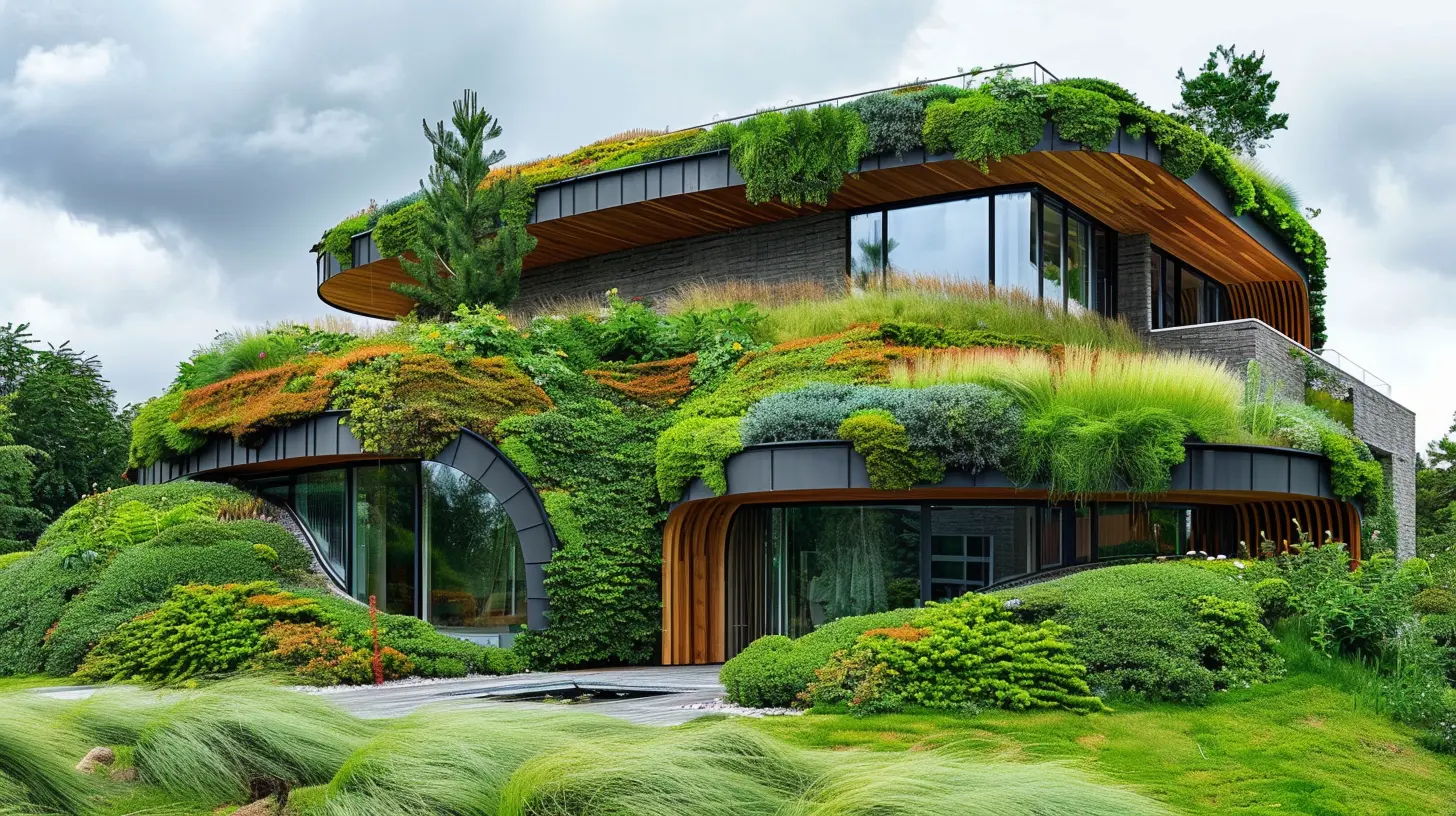Sustainable Landscaping for Eco-Conscious Homeowners
25 July 2025
If you’re an eco-conscious homeowner, creating a sustainable landscape is one of the best ways to reduce your carbon footprint while keeping your yard beautiful. Imagine a lush, thriving garden that not only looks amazing but also supports local wildlife, conserves water, and minimizes waste. Sounds like a dream, right? Well, it’s totally possible!
In this guide, we’ll dive into some easy yet effective ways to design an eco-friendly yard that benefits both you and the planet.

Why Sustainable Landscaping Matters
Traditional landscaping often relies heavily on water, chemical fertilizers, and pesticides—none of which are great for the environment. Sustainable landscaping, on the other hand, works with nature rather than against it. Here’s why it’s worth considering:- Reduces Water Waste – Smart irrigation and drought-resistant plants help lower water usage.
- Boosts Biodiversity – Native plants attract bees, butterflies, and birds.
- Lowers Maintenance Costs – Less need for fertilizers, pesticides, and excessive watering.
- Cuts Down on Pollution – Eliminates harmful chemicals that can seep into the soil and waterways.
Now, let’s get into the details of how you can transform your yard into a sustainable oasis!

1. Choose Native Plants
One of the easiest ways to keep your landscape eco-friendly is by using native plants. These plants have adapted to your region’s climate, meaning they need less water and care compared to non-native species. Plus, they provide a natural habitat for local birds and pollinators.How to Pick the Right Native Plants
- Check with local nurseries or environmental organizations for a list of native species.- Look for drought-tolerant plants if you live in an area with water restrictions.
- Select a mix of flowers, shrubs, and trees for a diverse and balanced landscape.

2. Reduce Lawn Space
While a big, green lawn might seem appealing, it’s one of the biggest water guzzlers in conventional landscaping. Instead of grass, look for alternatives that require less maintenance and water.Lawn Alternatives to Consider
- Clover Lawns: Require little watering and stay green year-round.- Ground Covers: Moss, creeping thyme, or sedum can replace traditional grass.
- Mulched Areas: Wood chips or bark mulch help retain moisture and suppress weeds.

3. Use Water Wisely
Water conservation is key to a sustainable landscape. Instead of overwatering your yard, make a few simple changes to keep your plants hydrated while reducing waste.Smart Watering Tips
- Install a Drip Irrigation System – This delivers water directly to plant roots, minimizing evaporation.- Water Early or Late – Watering in the early morning or late evening reduces water loss due to heat.
- Collect Rainwater – Set up rain barrels to capture water for future irrigation.
4. Compost for Fertilization
Why spend money on chemical fertilizers when you can create your own nutrient-rich compost at home? Composting not only reduces waste but also improves soil health, promoting stronger and healthier plants.What to Compost
- Fruit and veggie scraps- Coffee grounds and eggshells
- Grass clippings and leaves
- Shredded newspaper and cardboard
Once your compost is ready, mix it into your soil for a natural and sustainable boost of nutrients!
5. Say No to Chemical Pesticides
Pesticides and herbicides might keep pests at bay, but they also harm beneficial insects, birds, and even pets. Instead, go for eco-friendly pest control methods to protect your plants without the harmful side effects.Natural Pest Control Solutions
- Introduce Beneficial Insects – Ladybugs and praying mantises eat harmful bugs.- Neem Oil Spray – A natural pesticide that keeps common pests away.
- Garlic and Pepper Sprays – Homemade sprays that repel insects without toxic chemicals.
6. Create a Pollinator-Friendly Garden
Pollinators like bees, butterflies, and hummingbirds play a crucial role in our ecosystem. By planting flowers they love, you’re not only helping them thrive but also encouraging a healthier environment.Best Plants for Pollinators
- Lavender- Sunflowers
- Coneflowers
- Milkweed (great for Monarch butterflies!)
Bonus tip: Avoid using chemical sprays near these plants to keep your pollinators safe!
7. Use Sustainable Hardscaping
When designing pathways or patios, opt for eco-friendly hardscaping materials. Traditional concrete creates runoff that can harm the environment, but sustainable materials allow water to seep through, preventing erosion and flooding.Eco-Friendly Hardscaping Options
- Permeable Pavers – Let rainwater filter naturally into the ground.- Recycled Bricks or Wood – Great for patios and garden paths.
- Gravel or Crushed Stone – Allows for proper drainage while adding a rustic look.
8. Grow Your Own Food
Why not take sustainability to the next level and grow your own food? A small vegetable or herb garden can reduce your grocery trips, cut down on plastic packaging, and provide fresh and organic produce right from your backyard.Easy Crops to Start With
- Tomatoes- Lettuce and kale
- Herbs like basil, thyme, and rosemary
- Strawberries and blueberries
Even if you don’t have a lot of space, vertical gardens or container gardening on a balcony can work wonders!
9. Incorporate Recycled and Upcycled Materials
Before heading to the store for new garden décor, see what you can repurpose! Upcycling old items not only saves money but also adds a unique, personal touch to your landscaping.Creative Upcycling Ideas
- Turn old pallets into garden beds.- Use mason jars as solar lanterns.
- Repurpose an old bicycle as a flower planter.
Little touches like these make your garden stand out while keeping sustainability in mind.
10. Encourage Wildlife in Your Garden
A sustainable garden isn’t just about the plants—it’s also about creating a space where wildlife can thrive. Install bird feeders, leave out shallow water dishes for small critters, and let parts of your garden grow naturally to offer shelter to insects and small animals.Ways to Attract Wildlife
- Add a Birdbath – Birds love a cool place to drink and bathe.- Install a Bee Hotel – Provides shelter for solitary bees.
- Plant Berry-Producing Bushes – Great for feeding birds in winter.
Final Thoughts
Sustainable landscaping is all about working in harmony with nature rather than trying to control it. By making small, eco-friendly changes, you’re not only creating a stunning outdoor space but also contributing to a healthier planet.So, why not start today? Whether it’s swapping out high-maintenance grass for native plants or setting up a compost bin, every step counts. Your yard—and the environment—will thank you for it!
all images in this post were generated using AI tools
Category:
Sustainable HousingAuthor:

Cynthia Wilkins
Discussion
rate this article
1 comments
Rose McManus
Great insights on sustainable landscaping! It's inspiring to see eco-conscious practices gaining traction among homeowners. Thank you for sharing these valuable tips for a greener future!
August 1, 2025 at 2:43 AM

Cynthia Wilkins
Thank you for your kind words! I'm glad you found the tips inspiring and valuable for promoting a greener future.


